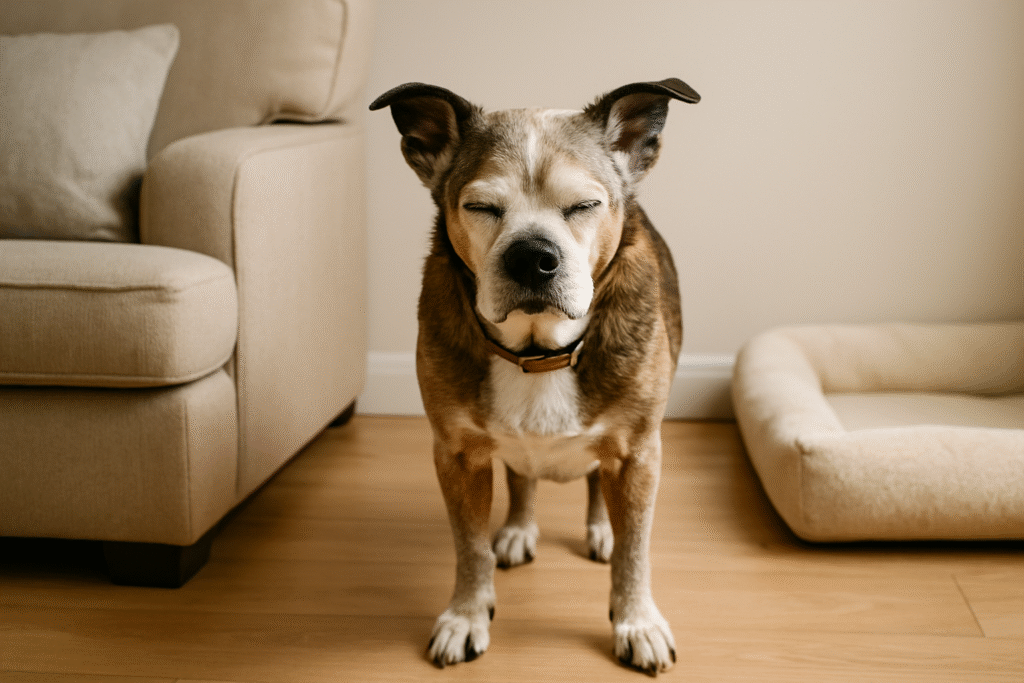
As dogs grow older, some begin to lose their vision or hearing—sometimes both. While this can be stressful for pet parents, most dogs adapt remarkably well with the right environment and support. You can help your blind or deaf senior dog feel secure, confident, and loved at home by making a few thoughtful adjustments.

Understanding Sensory Loss in Senior Dogs
Degeneration of vision and hearing is a natural part of aging for many dogs. Some may develop cataracts or glaucoma, while others experience hearing loss due to changes in the middle or inner ear. Often, these changes happen gradually and can go unnoticed until the dog shows signs of confusion or hesitation.

Signs Your Dog May Be Losing Vision or Hearing
- Stumbling or bumping into furniture
- Reluctance to go outside, especially at night
- Startling easily when approached from behind
- Not responding to verbal commands or noises
- Clinginess or separation anxiety

Creating a Safe and Predictable Home
Dogs thrive on routine and familiarity. Keeping furniture in consistent locations, using baby gates around hazards, and removing tripping obstacles can help blind or deaf dogs move confidently through their space. Avoid rearranging the layout unnecessarily.

Use Scent and Texture for Orientation
Place textured mats near food and water bowls, doors, or beds to signal location. You can also use dog-safe essential oils (like lavender or chamomile) to “mark” key areas with a specific scent. This helps a dog build mental maps of their surroundings.

Training Tips for Blind or Deaf Dogs
Use touch cues or hand signals depending on the type of sensory loss. For blind dogs, a light shoulder tap may mean “sit” or a double tap means “follow.” For deaf dogs, exaggerated visual signals or flashing lights can be used to get their attention. Consistency is key.

Choosing a Comfortable Sleeping Spot
For blind or deaf senior dogs, their bed is a critical comfort zone. Choose a low-entry, orthopedic bed that supports aging joints and minimizes the chance of injury. Orthopedic dog beds are especially helpful if the dog also has arthritis.

Support and Encouragement
Most dogs adjust to sensory changes better than humans expect. Stay patient, use gentle praise, and celebrate small wins. Touch and scent become primary tools for communication and bonding. With routine and compassion, your dog will still enjoy a rich and safe life.
👉 If your dog is also showing signs of pain or arthritis, this guide may help.
